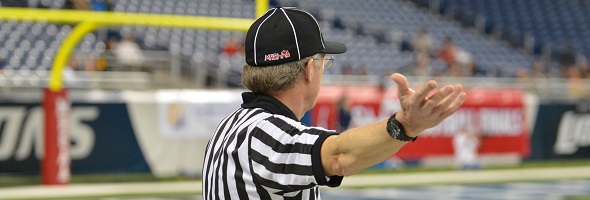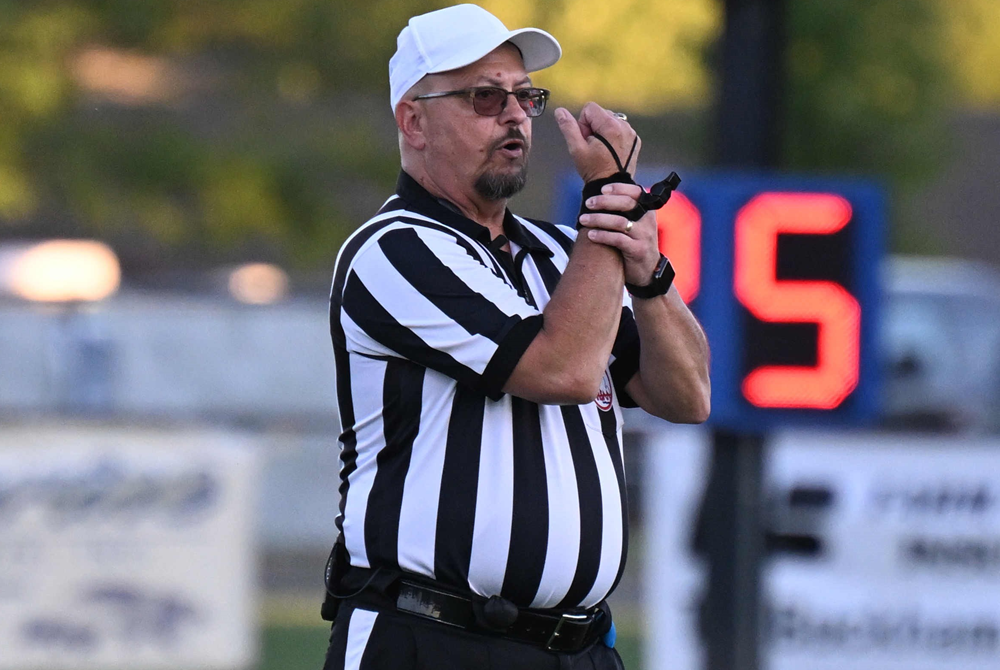
Be the Referee: Blocking Below the Waist
November 13, 2014
This week, MHSAA assistant director Mark Uyl explains the differences between high school and the college and professional games when it comes to blocking below the waist.
"Be the Referee" is designed to help educate people on the rules of different sports, to help them better understand the art of officiating and to recruit officials. The segment can be heard on Mondays, Wednesdays and Fridays during the school year on The Drive With Jack Ebling on WVFN-AM, East Lansing.
Below is this week's segment - Blocking Below the Waist - Listen
Many times the key rules differences between high school football and those rules used at the college and profession levels deal with player safety. One of the best examples of this deals with the rules that cover blocking below the waist.
All of us have watched that game played on Saturday or Sunday; we’ve seen that wide out or the wide receiver blocking downfield, and they block the defender below the waist in springing that runner for a big gain.
At the high school level, the only offensive players that can block below the waist are those on the offensive line, generally positioned from tackle to tackle, and those blocks below the waist must be immediate – at the snap – and within that free blocking zone at the line of scrimmage.
Past editions
Nov. 5 - Tournament Selection - Listen
Oct. 29 - Uncatchable Pass - Listen
Oct. 22 - Preparation for Officials - Listen
Oct. 15 - Automatic First Downs - Listen
Oct. 8 - Officials & Injuries - Listen
Oct. 1 - Overtime - Listen
Sept. 25 - Field Goals - Listen
Sept. 18 - Tackle Box - Listen
Sept. 11 - Pass Interference - Listen
Aug. 25 - Targeting - Listen

Be the Referee: Football Holding
By
Sam Davis
MHSAA Director of Officials
August 27, 2024
Be The Referee is a series of short messages designed to help educate people on the rules of different sports, to help them better understand the art of officiating, and to recruit officials.
Below is this week's segment – Football Holding - Listen
In football, it’s often said that holding happens on every play. But does it?
When an offensive player uses their hands or arms to illegally restrain a defensive player – that’s holding. This typically happens when blockers grab or pull defensive players away from their path – impeding their ability to make a play. The penalty is 10 yards from the previous spot.
Defensive players can be flagged for holding as well. That’s also a 10-yard penalty. An example of defensive holding is when a cornerback grabs a receiver to slow him down before the ball is thrown. If that same contact happens while the pass is in the air – then it’s pass interference. Defensive pass interference is a 15-yard penalty.
PHOTO A football official signals holding during a 2023 game. (Photo by Gary Shook.)

